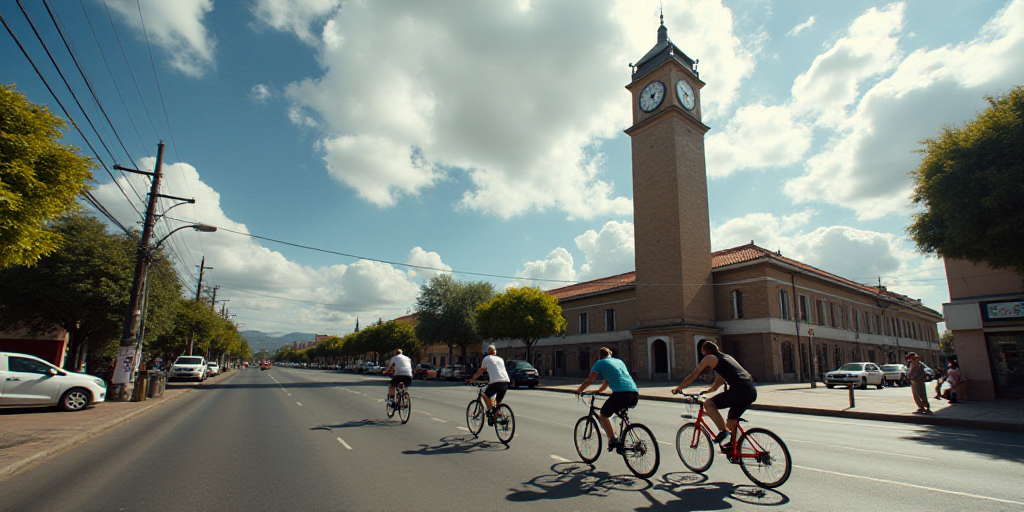Introduction
Guadalajara, Jalisco – To foster economic development and job creation across various regions in Jalisco, the Coordination of Economic Growth and Development has initiated the first municipal accelerator in Mexico. This initiative, named “Ruta Mágica,” aims to empower local government officials and small businesses in the state’s 12 Magical Towns to boost sales and employment opportunities, taking advantage of the 2026 FIFA World Cup.
Program Details
The program, a collaboration between the Secretariat of Economic Development (SEDECO) and the Secretariat of Tourism (SECTURJAL), offers free training to municipal officials and interior businesses. The goal is to prepare these entities to capitalize on the opportunities presented by the 2026 World Cup, starting from January of the following year.
Zapopan’s Success as a Model
“We began with the Magical Towns due to their similarities, as they can also benefit from tourism related to this major event,” explained Mauro Garza, Coordinator of Economic Growth and Development.
The “Ruta Mágica” program, designed to support micro and small businesses in the state, takes inspiration from Zapopan’s success. Through the “Hecho en Zapopan” program, Zapopan’s small and medium enterprises (SMEs) saw a 30% increase in sales and created 1,900 jobs over nine generations.
“Our aim is to reach Zapopan’s achievements, although they have nine generations under their belt; for now, we aspire to see a similar growth rate, fueled by the upcoming tourism surge,” explained Cindy Blanco, SEDECO’s head.
Funding and Long-term Strategy
The program has a budget of 20 million pesos to distribute among the 12 Magical Towns. Blanco emphasized that the true value lies in training municipalities to establish long-term public policies for continuous business development, providing diagnostics, training, and consultancy, with financial assistance being the “cherry on top.”
“From the Economic Development Secretariat, we understand two key aspects: investing in regional development and supporting micro and small businesses. If we did it directly, our efforts would be diluted, reaching fewer people… The vision was to collaborate with municipalities, train them, provide resources, and enable them to develop their economic units,” Blanco Ochoa clarified.
Tourism’s Economic Impact
Michelle Fridman Hirsch, the Tourism Secretary, highlighted that when tourism is treated as a genuine economic industry, it significantly impacts 132 sectors of the economy.
“Currently, our 12 Magical Towns enable us to decentralize tourism activity throughout the state, registering nearly five million visitors annually and generating over 11.5 billion pesos in economic impact, benefiting many Jalisciense residents outside the capital or Puerto Vallarta who rely on tourism,” Fridman Hirsch added.
The 12 Magical Towns of Jalisco
The 12 Magical Towns of Jalisco are Ajijic, Cocula, Lagos de Moreno, Mascota, Mazamitla, San Sebastián del Oeste, San Pedro Tlaquepaque, Sayula, Talpa de Allende, Tapalpa, Tequila, and Temacapulín.
Key Questions and Answers
- What is the purpose of the “Ruta Mágica” program? The “Ruta Mágica” program aims to train local government officials and small businesses in Jalisco’s 12 Magical Towns to capitalize on opportunities presented by the 2026 FIFA World Cup, boosting sales and employment.
- Which town serves as a model for the program? Zapopan’s success with its “Hecho en Zapopan” program is the model for “Ruta Mágica.”
- What is the program’s budget and long-term strategy? The program has a 20 million pesos budget to distribute among the 12 Magical Towns. Its long-term strategy involves training municipalities to establish continuous business development policies, providing diagnostics, training, consultancy, and financial assistance.
- How does tourism contribute to Jalisco’s economy? Tourism, when treated as a genuine economic industry, significantly impacts 132 sectors of Jalisco’s economy, generating nearly five million annual visitors and over 11.5 billion pesos in economic impact.
- What are Jalisco’s 12 Magical Towns? Ajijic, Cocula, Lagos de Moreno, Mascota, Mazamitla, San Sebastián del Oeste, San Pedro Tlaquepaque, Sayula, Talpa de Allende, Tapalpa, Tequila, and Temacapulín are Jalisco’s 12 Magical Towns.






